Deadlifting is an exciting and incredible workout. It’s as simple as lifting a large amount of weight, putting it down, and then trying to lift it again with more force. This workout engages your hamstrings, glutes, and lower back, allowing you to get the most out of your training program. Currently, there are different types of deadlifts such as the traditional deadlift, the Romanian deadlift, the dumbbell deadlift or the trap bar deadlift (1). In today’s blog post we are going to focus on the hexagonal bar deadlift, a very important exercise when starting to perform this movement and one that helps us learn.
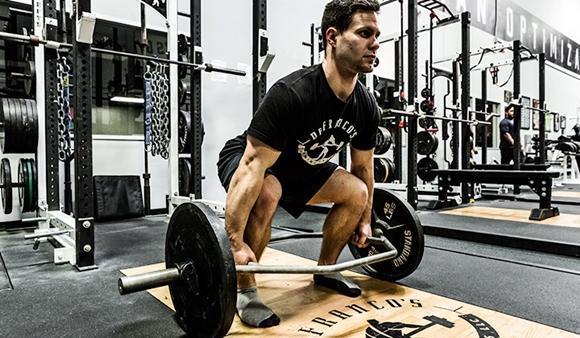
What is the trap bar deadlift?
This type of lift involves the use of a trap bar instead of a conventional bar. The hexagonal bar has two handles placed on the sides to allow a neutral and lateralized grip. To use this bar, the athlete has to stand inside the hexagon frame with the weight loaded on both sides. When both handles are grasped, the weight should be lifted in a movement very similar to the conventional deadlift.
The conventional deadlift and the trap bar deadlift share some similarities and differences. Both exercises are similar in that they both train the hip hinges and involve lifting the weight off the ground and putting it back down. Now, the difference between the two exercises is that the trap bar deadlift allows for a technique that loads the lower back much less and allows beginners to lift a heavy load, but without detriment to technique. The technique of the lift differs from exercise to exercise. The following muscles are trained with a trap bar deadlift:
- Hamstrings
- Buttocks
- Quadriceps
- Erectors
- Traps and back
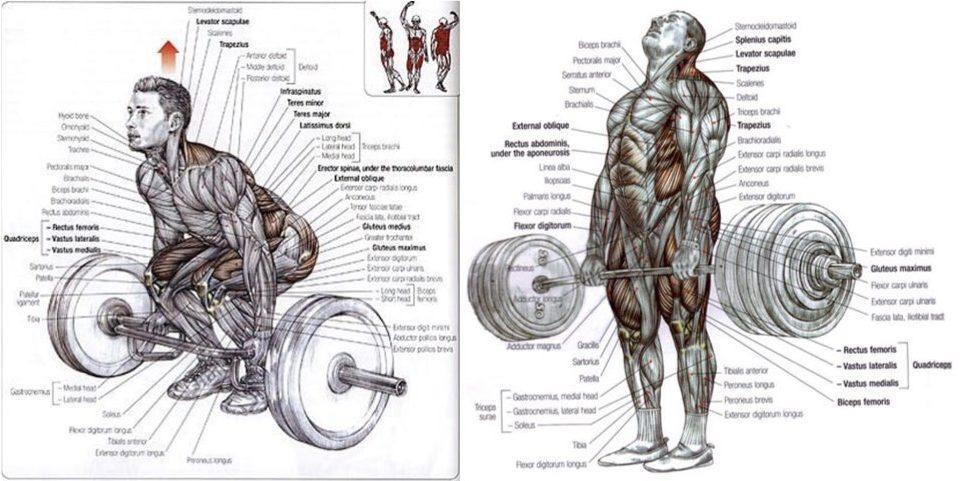
In general, trap bar deadlifts focus more on the quads than other types of deadlifts such as conventional or Romanian deadlifts. In contrast, a conventional deadlift puts more emphasis on the hamstrings, spinal erectors, and glutes. But that’s not to say that trap bar deadlifts aren’t a good way to train your glutes and hamstrings.
Top Reasons to Pick Trap Bar Deadlifts
It is true that certain sports such as powerlifting do not use the hexagonal bar but instead perform a conventional deadlift. The conventional deadlift or even the sumo deadlift are two exercises that are seen and repeated in the gym on a regular basis. However, many of them use a horrible technique that favors the appearance of injuries. For anyone who has never done a deadlift, who is not familiar with the technique, who does not know how to perform the exercise well, it can be dangerous to perform a conventional deadlift.
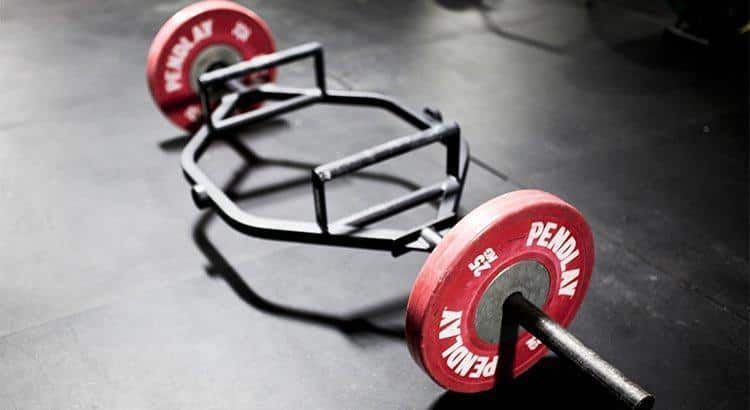
However, due to its physical characteristics, the hexagonal deadlift allows anyone to maintain good spinal alignment and very good execution. That’s why the trap bar is great to begin with. Likewise, the hexagonal bar allows a much better grip than the conventional bar and, therefore, favors its use over other deadlifts. Here are some of the reasons coaches and athletes choose to use the hex deadlift:
1. Great Way to Start For Beginners
All lifters can benefit from the trap bar deadlift; however, this exercise is often used specifically for beginners looking to get off to a great start in increasing their muscle mass and strength (2). Also, this deadlift modality allows you to understand your hinge mechanics in the most ideal way (2). The trap bar deadlift helps people starting to train because:
Hyperextension of the neck or lower back is minimized
When a beginning athlete begins the conventional deadlift, we will most likely see them arch their back, turn their knees inward, or hyperextend their neck to lift the weight. This problem is mainly due to the inability to use the deadlift bar properly. The trap bar deadlift prevents this hyperextension and allows for a much cleaner lift.
Less range of motion and, therefore, less overload at the lumbar level
Most trap bars come with raised handles, which allow you to shorten the range of motion by reducing the flexion degree at the knees and hips. As a result, you will be able to assume a flatter back with these bars than with conventional bars. Athletes and coaches around the globe use trap bar deadlifts to increase back and hip strength.
Reduce Strain on the Lower Back
Beginners won’t want to end up with excessive lower back strain during the first few days of deadlifting. In fact, the risk of lower back injury is higher with the conventional deadlift in beginners. However, the trap bar deadlift doesn’t put a lot of stress on your lower back and reduces your risk of injury.
2. More Widespread Applications
Due to its numerous advantages, the trap bar deadlift has found its application in different sports. The biomechanics of the movement and its ease of execution in athletes who are not specialized in lifting weights have made it a widely used resource to improve vertical jump power (3). Here is a brief summary of those sports.
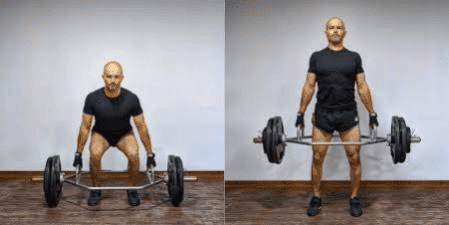
Olympic Weightlifting
Olympic weightlifters (weightlifters) typically have to perform a clean pull, that is, a specific movement that brings the athlete to a more upright position from the moment they touch the barbell on the ground. At this point, training with the trap bar deadlift may be more beneficial as it increases back and leg strength while minimizing back strain. One of the easiest ways to measure the speed of the pull is through the Vitruve linear encoder that measures each repetition and tells you if you are in or out of range.
Powerlifting and Strongman
These two versions of a sport that have the same goal (lift more kg) can benefit from training with a hexagonal bar. While powerlifting typically consists of conventional deadlifts in powerlifting, coaches and athletes are now introducing trap bar deadlifts to reduce back strain. Likewise, a Strongman athlete can also use this deadlift modality to improve overall strength.
3. Lower Risk of Injury
Although the risk of injury cannot be eliminated, the use of a trap bar reduces this risk in the deadlift significantly. In fact, if we accompany a deadlift training with a hexagonal bar with a training based on speed, the progression of our athlete will be very clear, the risk of injury will be minimized in quantity. Trap bar deadlifts are generally considered safer for taller athletes or beginners, as they require less range of motion and lower back strain.
4. Diversification of pulling force
Sometimes branching out on your deadlift can help you gain extra strength. There are often a lot of changes in your position and technique when you go from conventional to trap bar deadlifts. As a result, you can train different muscles. Not only will this increase your muscle growth, but it will also help prevent injury.

How to use speed-based training with the trap bar
Recent advances related to speed-based training have involved a paradigm shift in strength and endurance training. While athletes have been working their muscles and increasing their power until recently, experts have identified ways to induce speed-based training throughout the build. That’s where the Vitruve speed-based execution device comes in. This type of training is defined as a training in which the athlete focuses a lot on the speed of execution and trains within a speed range. Depending on the exercise, the speed is one or the other. We have recently made a review of the speeds that are used depending on the exercises. When the athlete is fatigued, that is, there is a drop in execution speed, training is stopped.
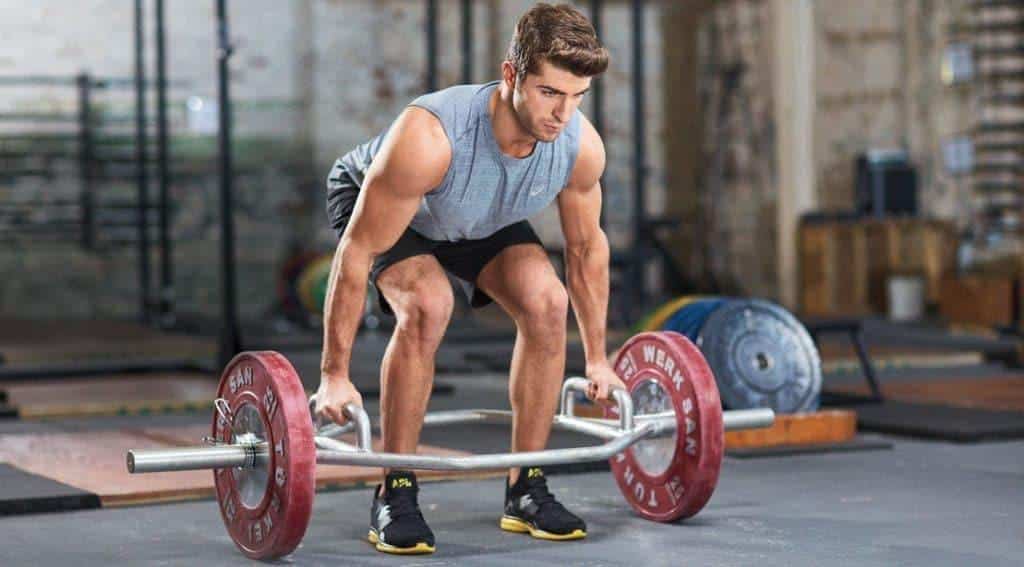
As with other types of training, the deadlift has also been an area of interest for fitness trainers. That said, combining conventional deadlifts and speed-based training can be of great interest in some cases, but in others, such as when we start with a beginner, it can even be counterproductive since the athlete will not be able to handle a high load at a high speed. This increases the risk of injury, and the movement itself is difficult to maintain. On the other hand, a trap bar can help you speed up your deadlifts without injuring yourself and be able to meet training speed requirements more effectively.
All in all, using a VBT measurement device can go a long way toward achieving your speed goals with fitness training. The fact is that going too fast without control puts you at risk of injury. Therefore, wearing a device like the Vitruve can help you track your performance in the most ideal way.
References
- Camara K. An examination of muscle activation and power characteristics while performing the deadlift exercise with straight and hexagonal barbells: California State University, Fullerton; 2015.
- Swinton PA, Stewart A, Agouris I, Keogh JW, Lloyd R. A biomechanical analysis of straight and hexagonal barbell deadlifts using submaximal loads. The Journal of Strength & Conditioning Research. 2011;25(7):2000-9.
- Harmon RA, Malyszek KK, Dunnick DD, Costa PB, Coburn JW, Brown LE, editors. Correlation Between Isometric Deadlift with Olympic and Hexagonal Barbells to a Vertical Jump. Medicine and science in sports and exercise; 2016: LIPPINCOTT WILLIAMS & WILKINS TWO COMMERCE SQ, 2001 MARKET ST, PHILADELPHIA ….












